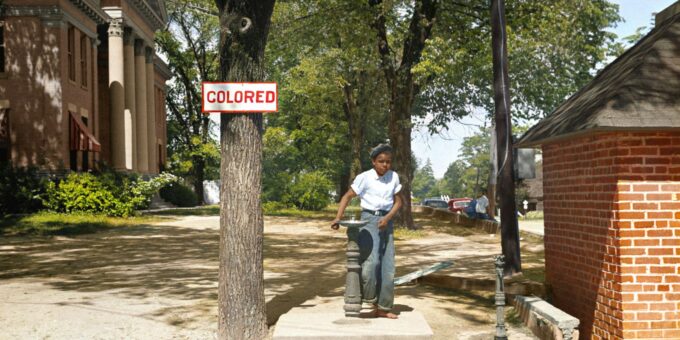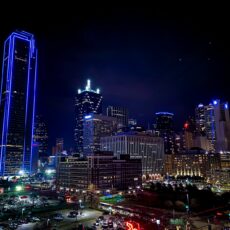
The Civil Rights Movement is often remembered as a series of landmark events that occurred in cities like Montgomery, Birmingham, and Selma. But the fight for racial equality also played out in many other regions, including Dallas, Texas. While it didn’t see the same level of national attention as some other cities, the struggle in Dallas was marked by underground trends, advanced strategies, and rare insights that were critical to advancing civil rights in the South.
Dallas and Its Unique Landscape
To understand how the Civil Rights Movement unfolded in Dallas, it’s essential to first grasp the unique social and political landscape of the city. Dallas was a deeply segregated city in the early-to-mid 20th century. Racial discrimination permeated every aspect of life, from housing to education to public facilities. Yet, unlike cities that became flashpoints of violence and protests, Dallas’ civil rights struggle unfolded in a more restrained, calculated manner.
This quiet but determined approach was largely a response to the city’s staunch political and business elite, who were reluctant to embrace public protest or social change. Therefore, Dallas’ civil rights leaders had to adapt by employing advanced strategies that navigated these limitations, leveraging underground networks and more strategic forms of protest.
Underground Trends in the Dallas Movement
Dallas civil rights leaders were deeply connected to underground movements that were gaining momentum across the South. While not as visible as other movements, these underground trends played a crucial role in shifting the social and political atmosphere. They helped create connections between local activists and larger, national organizations like the NAACP (National Association for the Advancement of Colored People) and CORE (Congress of Racial Equality).
One important underground trend in Dallas was the growth of informal civil rights groups, many of which worked covertly to avoid drawing too much attention from local law enforcement and city officials. These smaller groups focused on economic boycotts and voter registration drives, often operating below the radar of mainstream society. For example, Black citizens in Dallas participated in “shop-ins” or informal boycotts of businesses that refused to hire African Americans, silently but effectively pressuring businesses to integrate.
Additionally, churches played a pivotal role in Dallas’ civil rights movement. Many churches served as meeting places for activists, providing a space for organizing and strategizing away from public view. These congregations, especially in the Black community, were instrumental in connecting people to underground efforts aimed at dismantling segregation.
Advanced Strategies Used by Civil Rights Leaders
The civil rights leaders in Dallas understood that to make significant strides, they had to adopt advanced strategies that accounted for the city’s conservative power structure. While direct-action protests were the hallmark of movements in cities like Birmingham, Dallas activists often took a more calculated approach.
One such advanced strategy was the use of legal challenges. NAACP leaders in Dallas worked tirelessly to challenge segregation through the courts, focusing on dismantling discriminatory laws that kept African Americans in second-class status. This legal strategy was time-consuming but effective, and it played a key role in securing gradual but meaningful progress.
For instance, the court case Sweatt v. Painter in 1950 was a legal battle led by the NAACP in Texas, including Dallas activists, that successfully challenged racial segregation in higher education. This victory was one of many that set precedents for further legal battles across the country.
Another advanced strategy was the building of alliances with white liberals and moderate business leaders in Dallas. Activists like Rev. Maynard Jackson and Juanita Craft understood that local power dynamics made it difficult to create change without forming unlikely alliances. By reaching out to white business owners and moderate politicians, they were able to negotiate incremental changes, such as the desegregation of certain public facilities and schools. These alliances were delicate but necessary, allowing civil rights leaders to chip away at segregation without provoking the kind of violent backlash seen in other Southern cities.
Rare Insights into the Movement’s Structure
One of the rare insights into the Civil Rights Movement in Dallas is how it relied heavily on education as a form of activism. Unlike some cities where protests and marches dominated the civil rights narrative, Dallas activists placed a strong emphasis on educating both African Americans and white residents about the importance of equality and integration.
African American schools in Dallas were underfunded and overcrowded, a clear manifestation of the city’s systemic racism. To combat this, local leaders invested in educational programs designed to uplift the Black community. Activists like Juanita Craft, who served as the Dallas NAACP Youth Council advisor, spearheaded initiatives that taught young African Americans about their rights and the power of collective action. These educational efforts were not just about academic knowledge but also focused on preparing youth for leadership roles within the movement.
Additionally, Dallas’ civil rights movement featured a rare focus on behind-the-scenes political lobbying. Civil rights leaders worked diligently to push local politicians toward change without resorting to public confrontations. They met with city officials and business leaders privately to advocate for reforms like integrating lunch counters and opening up public spaces to Black citizens. This political strategy helped avoid public clashes and created opportunities for more sustained change over time.
Voter Registration and Political Engagement
Another critical strategy involved voter registration and political engagement. Dallas civil rights leaders, understanding the importance of political power, placed significant focus on getting African Americans registered to vote. Despite obstacles like literacy tests and poll taxes, activists worked tirelessly to overcome these barriers, organizing voter registration drives and educating the community on their political rights.
This advanced strategy of voter mobilization was critical in securing African American representation in Dallas politics. The efforts of groups like the NAACP and the Dallas Negro Chamber of Commerce led to an increase in Black political participation, which eventually resulted in the election of African American officials and greater influence over local government policies. This focus on political engagement represented a long-term strategy that extended beyond immediate civil rights victories, ensuring that the movement would have a lasting impact on the city’s governance.
The Lasting Impact of Dallas’ Civil Rights Movement
The Civil Rights Movement in Dallas may not have garnered the same national headlines as movements in other cities, but its impact was profound. Through underground networks, advanced strategies, and the rare insights of its leaders, Dallas made significant strides toward racial equality. The city’s civil rights activists understood the need to adapt their strategies to the local environment, employing legal battles, educational programs, and political lobbying to push for change.
Today, Dallas stands as a testament to how civil rights can be won through patience, perseverance, and strategic planning. While it took decades to see meaningful progress, the foundation laid by the civil rights leaders of Dallas has had a lasting impact, not only on the city itself but on the broader struggle for equality across the nation.
The Civil Rights Movement in Dallas serves as an important reminder that change often happens incrementally and that behind every victory, countless unsung heroes are working diligently, often in the shadows, to push society forward.

















Wow, marvelous weblog structure! How long have you been blogging for?
you made running a blog look easy. The entire glance of your web site is magnificent, as neatly as the content!
Thanks to knowledgeable and dedicated people like you, the internet becomes a more useful place for travelers. I loved your article and have already started applying what I learned from it to my upcoming trip. We also discussed a similar topic about budget travel on TravelForums. Thank you so much!